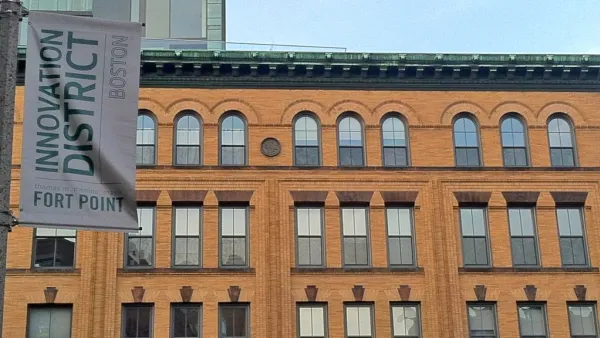A new report by Bruce Katz of Brookings Institute discusses the federal government’s role in spurring and aiding the innovation districts found in many cities across the country today.
In response to the U.S. Office of Science and Technology Policy, Bruce Katz of Brookings Institute argues, "The federal government should not attempt to lead the development of innovation districts. Successful districts do not emerge from a federal program like empowerment zones but rather from the collaborative efforts of local institutions and leaders and organic market dynamics. In addition, the emerging districts around the country differ markedly in their leadership structure, sector orientation, and existing economic, physical and networking assets—obviating any one 'one size fits all' response."
While Katz does not believe in one blanket policy to support all innovation districts, he offers three main ways the federal government can support these districts. The first is through continuing funding to basic and applied research at the major anchor institutions associated with innovation districts. For example, MIT "relies on the federal government for roughly 70 percent of its research funding—$466 million in 2013. This federally-backed research creates a platform for commercialization, which spurs job creation and entrepreneurial growth and brings technological advances to our businesses and homes."
In addition, Katz also uses the decision to locate the American Lightweight Metals Manufacturing Institute in Detroit as having "the potential to not only spur innovative commercialization and strengthen an important regional cluster but also to supercharge the revitalization of communities though the growth of housing, retail establishments and quality place-making."
The second policy recommendation Katz offers is for the federal government to "encourage a more robust school-to-work pipeline for sub-baccalaureate workers. Given the proximity of innovation districts to low-income neighborhoods… there is the demand for targeted federal efforts to underwrite STEM-oriented schools that offer apprenticeship opportunities."
Finally, Katz also strongly pushes for the federal government to support infrastructure and housing initiatives surrounding the innovation districts. As Katz writes, "the primary imperative is to reestablish the federal government as a reliable, consistent, and flexible partner in these arenas, both with regard to tax incentives… and discretionary and credit enhancement programs around housing, transportation, and sustainable development."
FULL STORY: What Should the Role of The Federal Government Be in Supporting Innovation Districts?

Analysis: Cybertruck Fatality Rate Far Exceeds That of Ford Pinto
The Tesla Cybertruck was recalled seven times last year.
National Parks Layoffs Will Cause Communities to Lose Billions
Thousands of essential park workers were laid off this week, just before the busy spring break season.

Retro-silient?: America’s First “Eco-burb,” The Woodlands Turns 50
A master-planned community north of Houston offers lessons on green infrastructure and resilient design, but falls short of its founder’s lofty affordability and walkability goals.

Test News Post 1
This is a summary

Analysis: Cybertruck Fatality Rate Far Exceeds That of Ford Pinto
The Tesla Cybertruck was recalled seven times last year.

Test News Headline 46
Test for the image on the front page.
Urban Design for Planners 1: Software Tools
This six-course series explores essential urban design concepts using open source software and equips planners with the tools they need to participate fully in the urban design process.
Planning for Universal Design
Learn the tools for implementing Universal Design in planning regulations.
EMC Planning Group, Inc.
Planetizen
Planetizen
Mpact (formerly Rail~Volution)
Great Falls Development Authority, Inc.
HUDs Office of Policy Development and Research
NYU Wagner Graduate School of Public Service


























